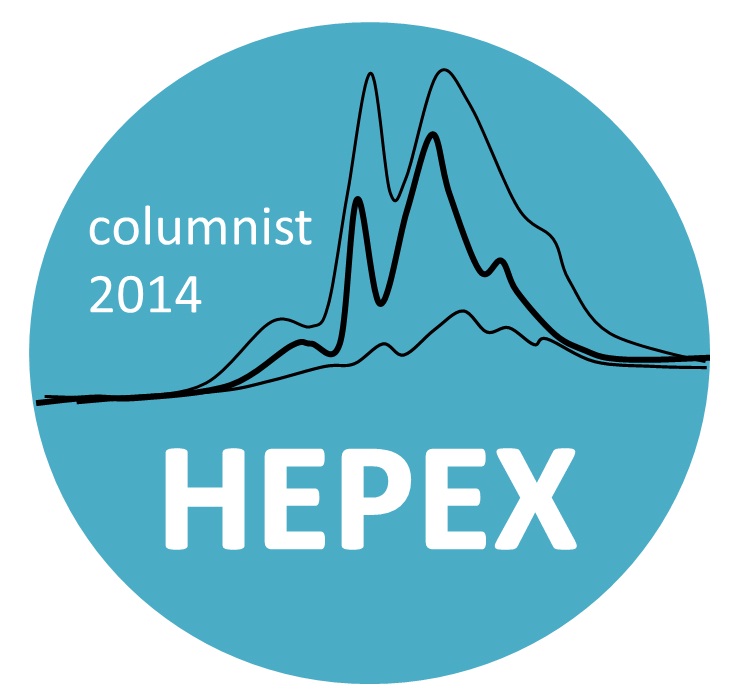Operational Highlight: Flood Forecasting by the Mekong River Commission
Contributed by Tom Pagano
An article has recently been published by Australian Bureau of Meteorology researcher Tom Pagano on the performance of the Mekong River Commission’s operational flood forecasts. Tom Pagano is a HEPEX guest columnist for 2014. Verification is a core topic in HEPEX and is a critical component of any forecasting system. Although research studies often verify retrospectively generated hindcasts, this publication is a rare example of verification of a long history (13 years) of as-issued operational hydrological forecasts.
The Mekong River is one of the few large rivers where its flow has not yet been drastically modified by human development. It is a complex and varied system, both naturally and institutionally, originating in the Tibetan Plateau, flowing through six countries, and discharging to the Mekong Delta in Viet Nam. The region and the River are underdeveloped, and there are anticipated major geopolitical, economic, social, and environmental changes – such as the planned five-fold increase in reservoir storage in the next ten years to support the irrigation and hydropower needs of a rapidly growing population.
Hydrologists at the operational flood forecasting desk of the Mekong River Commission in November 2012. From left to right are Nguyen Tien Kien from Viet Nam, Terry Malone from SEQWater, and Alex Minett from Deltares. Malone authored a 2006 Road Map report outlining the proposed modernization of the forecasting system (partly described here) which involved, among other things, using Deltares’ Flood Early Warning System. Photo by Tom Pagano.
A sequence of nearly unprecedented floods in 2000-2001 lead to the establishment of the Mekong River Commission’s (MRC) Regional Flood Management and Mitigation Center (RFMMC) in Phnom Penh, Cambodia. The Center and the flood forecasts it produces (example) are part of a broader water management plan that includes both structural and non-structural measures designed to keep floods away from people and people away from floods, respectively.
The forecasters use human expertise and a combination of hydrologic, hydraulic, and statistical models to generate the forecasts. The forecasting system was significantly updated in 2008, including using new data sources, improved and extended use of rainfall forecasts, and improved flood forecast models. The RFMMC shifted to the Delft-FEWS platform using the URBS event-based hydrologic model with Muskingum routing, as well the ISIS hydrodynamic model. It expanded its use of satellite-based precipitation estimates to supplement the sparse ground-based rain gauge network. Over time, the operational forecasters have improved and gained experience with the system. Past studies have also shown that the human adjusted forecasts are about 10% better than raw model output.
The forecasters’ challenges include, among other things, the unique hydrology of the Mekong. According to MRC
Boat races at Phnom Penh celebrating Bon Om Tuk, the water festival marking the seasonal reversal of the direction of flow in the Mekong. This year’s celebrations were cancelled to mourn recent losses from major floods. (Image source)
“Downstream from Kratie, seasonal floodplain storage dominates the annual regime and there is significant movement of water between channels over flooded areas, the seasonal refilling of the Great Lake and the flow reversal in the Tonle Sap. There is extreme hydrodynamic complexity in both time and space and it becomes impossible to measure channel discharge. Water levels, not flow rates and volumes, determine the movement of water across the landscape… As the water level in the mainstream falls in late September, water flows out of the lake down the Tonle Sap back into the Mekong mainstream. Nowhere else in the world is there a flow reversal this large.”
A second challenge is the availability of realtime and historic data. Much of the runoff is generated in Cambodia and Laos where, despite recent upgrades, the raingauge network is less than one fifth the minimum density recommended by the WMO. The forecasters have turned to using several remotely sensed products but the satellite-based rainfall estimates commonly differ from the in situ measurements and each other by 20-60% on seasonal timescales (or over 200% in extreme cases).
Schematic of lower Mekong River and its forecast points (dots) (source: http://www.hydrol-earth-syst-sci-discuss.net/10/14433/2013/hessd-10-14433-2013.pdf)
Despite these problems, a recently published evaluation in HESS by Tom Pagano showed that the 2000-2012 forecasts are exceptionally skilful. All locations except Chiang Saen have 1 day ahead Nash Sutcliffe (NS) scores greater than 0.99 (1.0 is perfect). Upstream of Kratie, 5 day ahead NS are typically 0.90, and remain above 0.98 for the points downstream. Undoubtedly, much of this apparent skill comes from the strong seasonal cycle and the slow variations of such a large river system. When compared to persistence (i.e. tomorrow will be the same as today), the skill is more modest, with Coefficient of Persistence scores between 0.4-0.8 for 1 day-ahead and 0.1-0.7 for 5 day-ahead forecasts (again, 1.0 is perfect).
Time series of river height observations (black lines) and forecasts (colored dots) for Luang Prabang (top), Pakse (middle) and Tan Chau (bottom) for 2010-2011. Flood Levels and Alarm Levels are horizontal lines and vertical lines divide the wet and dry seasons. (http://www.hydrol-earth-syst-sci-discuss.net/10/14433/2013/hessd-10-14433-2013.pdf)
The high level of skill suggests that the forecasters could extend their outlook horizon into the medium range (i.e. beyond 5 days ahead). The current product suite is deterministic and such longer lead forecasts would have to emphasize their uncertainty, such as through the use of ensembles and other approaches being explored under HEPEX. Further, performance of operational systems can be compared to experimental and research systems to evaluate the potential adoption of new techniques and technologies. There have been increased calls for study of “hydrologic forecasting science” as a way for forecasts to improve our understanding of natural systems and vice versa. HEPEX is an excellent venue for cultivating this fledgling science.
 Tom will be contributing to this blog over the year. Follow his columns here.
Tom will be contributing to this blog over the year. Follow his columns here.




0 comments